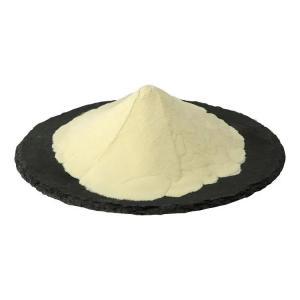Phosphatidylserine improves cognitive function in people of different ages
Time:2025-02-24In 1942, Jordi Folch, a neurochemist at Harvard University in the United States, extracted phosphatidylserine from cow brains. Since then, scientists have conducted in-depth studies on its molecular structure and biological properties. They found that it is a phospholipid composed of a glycerol backbone, two fatty acid chains, a phosphate group, and a serine residue, with a hydrophilic head and a hydrophobic tail. In cells, phosphatidylserine is mainly distributed on the inner side of the cell membrane and is an important component of the cell membrane, especially in the brain tissue, accounting for about 10-20% of the total phospholipid content in the brain.
As a "smart molecule", phosphatidylserine has gradually emerged from scientific research. The related research on it has been continuously deepened, and it has shown important value in the field of brain health and other aspects. It is a key component of the brain cell membrane and helps maintain the fluidity and stability of the cell membrane, which is crucial for the signal transmission between nerve cells. It also enables neurotransmitter receptors to function better, promotes the release and reception of neurotransmitters, makes the nerve signal transmission in the brain more efficient and accurate, and thus enhances the overall function of the brain.
Numerous studies have shown that supplementing with phosphatidylserine can improve the cognitive function of people of different ages. For the elderly, it can slow down the cognitive decline caused by aging, improve problems such as memory loss and inattention, and reduce the risk of neurodegenerative diseases such as Alzheimer's disease. For children and adolescents, it is helpful for improving learning ability, memory, and attention, and also has a certain effect on preventing attention deficit hyperactivity disorder in children and improving attention deficit.
Phosphatidylserine can regulate the function of the hypothalamic-pituitary-adrenal (HPA) axis in the human body, reduce the secretion of the stress hormone cortisol, and thus help people relieve negative emotions such as tension, anxiety, and depression, reduce stress, and make the psychological state more stable.
In the treatment research of neurodegenerative diseases such as Alzheimer's disease and Parkinson's disease, phosphatidylserine has shown certain potential and may protect nerve cells and delay the progression of the disease through multiple mechanisms. In addition, for nerve function disorders caused by brain injury, stroke, etc., it may also contribute to the repair and recovery of nerve function.
Some studies have found that phosphatidylserine also has potential benefits in the field of sports. It may help improve athletes' cognitive ability, reaction speed, and sports performance, reduce exercise fatigue, and promote recovery after exercise.
Based on scientific research results, phosphatidylserine has been widely applied in the fields of health products, food, etc. In the health product market, phosphatidylserine supplements are receiving increasing attention from consumers and are used to improve cognitive function, relieve stress, etc. In the food field, some functional foods added with it are also emerging continuously, such as milk powder and biscuits rich in phosphatidylserine, aiming to provide consumers with more convenient ways of nutritional supplementation.


 CN
CN





